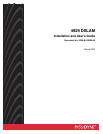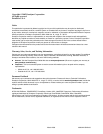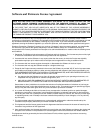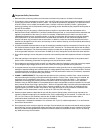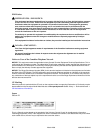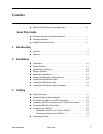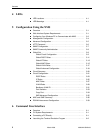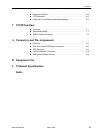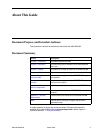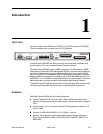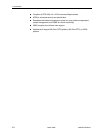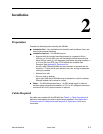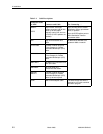
C March 2005 4929-A2-GN20-00
Important Safety Instructions
1. Read and follow all warning notices and instructions marked on the product or included in the manual.
2. This product is to be connected to a nominal –48 to –60 VDC supply source that is electrically isolated from the AC
source using minimum 18 AWG (0.75mm² ) leads . Two inputs are provided for redundancy. The positive terminal
of the DC source is to be reliably connected to earth. Connect a minimum 18 AWG (0.75mm² ) green/yellow
earthing (grounding) wire to the protective earthing (grounding) screw, identified by the protective earth symbol on
the back of the chassis.
3. This product may only be used in a Restricted Access Location in accordance with the requirements of the
National Electric Code, ANSI/NFPA 70, and the Canadian Electrical Code, or in accordance with the standards and
regulatory requirements of the country in which it is installed. A Restricted Access Location is a secure area
(dedicated equipment rooms, equipment closets, or the like) for equipment where access can only be gained by
service personnel or by users who have been instructed about the reasons for the restrictions applied to the
location and about any precautions that must be taken. In addition, access into this designated secured area is
possible only through the use of a tool or lock and key, or other means of security, and is controlled by the authority
responsible for the location.
4. A readily accessible disconnect device as part of the building installation shall be incorporated in fixed wiring. The
DC disconnect device must be rated at a minimum 60 VDC, minimum 2A. The disconnect device shall be readily
accessible to the operator. The disconnect device must be included with an adequately rated fuse or circuit breaker
in the ungrounded conductor. Use a minimum 18 AWG (0.75 mm²) fixed power source wires with strain retention.
5. Do not allow anything to rest on the power cord and do not locate the product where persons will walk on the power
cord.
6. Slots and openings in the cabinet are provided for ventilation. To ensure reliable operation of the product and to
protect it from overheating, these slots and openings must not be blocked or covered.
7. Do not attempt to service this product yourself, as it will void the warranty. Opening or removing covers may expose
you to dangerous high voltage points or other risks. Refer all servicing to qualified service personnel.
8. A rare phenomenon can create a voltage potential between the earth grounds of two or more buildings. If products
installed in separate buildings are interconnected, the voltage potential may cause a hazardous condition. Consult
a qualified electrical consultant to determine whether or not this phenomenon exists and, if necessary, implement
corrective action prior to interconnecting the products.
9. CLASS 1 LASER PRODUCT: This product has provisions for the customer to install a Class 1 laser transceiver,
which provides optical coupling to the telecommunication network. Once a Class 1 laser product is installed, the
equipment is to be considered to be a Class 1 Laser Product (Appareil à Laser de Classe 1). The customer is
responsible for selecting and installing the laser transceiver and for insuring that the Class 1 AEL (Allowable
Emission Limit) per EN/IEC 60825 is not exceeded after the laser transponders have been installed. Do not install
laser products whose class rating is greater than 1. Refer to all important safety instructions that accompanied the
transceiver prior to installation. Only laser Class 1 devices certified for use in the country of installation by the
cognizant agency are to be utilized in this product. Also, laser warnings are to be provided in accordance with
IEC 60825-1 and its Amendments 1 and 2, as well as 21 CFR 1010 and 1040.10(g).
10. General purpose cables are described for use with this product. Special cables, which may be required by the
regulatory inspection authority for the installation site, are the responsibility of the customer. To reduce the risk of
fire, use a UL Listed or CSA Certified, minimum No. 26 AWG (0.128 mm
2
) telecommunication cable, or
comparable cables certified for use in the country of installation.
11. The equipment is intended for installation in a maximum 149° F (65° C) ambient temperature, in an environment
that is free of dust and dirt.
12. Do not physically stack more than eight (8) units high. Physical stability has not been evaluated for stacking higher
than eight units, and any configuration greater than eight may result in an unstable (tip-over) condition. Ensure that
the four (4) rubber feet supplied with the product have been installed on the bottom of each unit prior to stacking
any 4929 units on top of one another.
!



